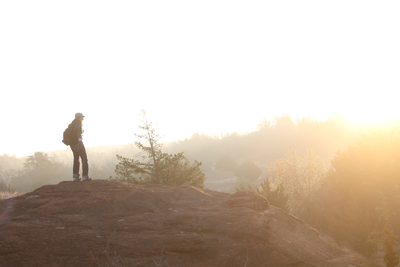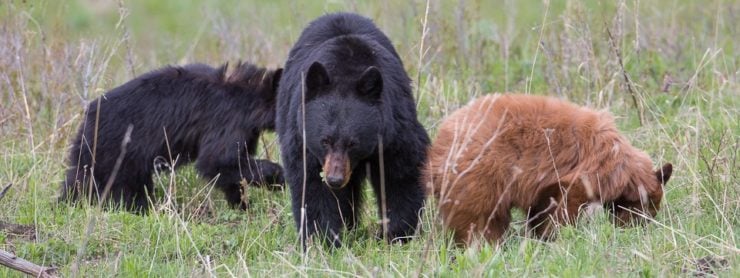Introduction
The wilderness, a vast and untamed expanse of nature, can be both beautiful and perilous. For many adventurers and nature lovers, hiking is a way to connect with the natural world and escape the trappings of daily life. However, in these wild areas, humans often find themselves at the mercy of the creatures that call it home. One such encounter between man and nature has recently grabbed headlines: the story of a 4 Foot Predator Killed by Hiker.
This gripping tale of survival has resonated with hikers, adventurers, and wildlife experts alike. It illustrates the unpredictability of the natural world and the importance of being prepared for anything. The hiker’s courage and quick thinking in a life-or-death situation are a testament to human resilience. In this blog, we’ll dive into the details of this incredible encounter, examining what transpired, the nature of the predator involved, and the broader implications of such an event. We’ll also offer insights into how hikers can better prepare themselves for wilderness adventures, ensuring that they can safely enjoy nature without falling victim to its darker side.
The Incident: Confrontation Between Man and Predator
The story of the 4 Foot Predator Killed by Hiker begins with what was supposed to be a peaceful hike in a remote wilderness area. The hiker, a seasoned outdoor enthusiast in their mid-30s, had set out for a multi-day trek through the dense forests of a national park. With clear skies, mild temperatures, and abundant wildlife, it seemed like the perfect opportunity to explore the great outdoors. However, this tranquil experience would soon turn into a battle for survival.
On the second day of the hike, the hiker had set out early in the morning, trekking through a thickly wooded section of the forest. At around midday, the hiker stopped to rest and eat by a stream, unaware that a predator was lurking nearby. Out of nowhere, the animal, later identified as a 4-foot-long predator, emerged from the underbrush and charged toward the hiker. The animal appeared agitated and aggressive, exhibiting behavior that indicated it saw the hiker as either a threat or potential prey.
What ensued was a terrifying struggle for survival. Armed with only basic hiking equipment, the hiker had to fend off the predator using a combination of defensive tactics and improvisation. In the end, after a fierce battle, the hiker managed to kill the predator in self-defense. The aftermath left the hiker shaken but alive, with minor injuries and an incredible story to tell.
The Predator: Understanding the 4-Foot Threat
One of the most intriguing aspects of the story is the predator itself. A 4 Foot Predator Killed by Hiker suggests that the animal was not the largest of the wild predators hikers typically fear, such as bears or mountain lions. However, a 4-foot predator can still pose a significant threat under the right conditions. So, what exactly was this animal?
Although the exact species of the predator has not been confirmed, several possibilities have been suggested based on witness reports and expert analysis. Among the potential candidates are:
While the exact species of the 4 Foot Predator Killed by Hiker remains uncertain, the fact that a predator of this size could pose a significant threat serves as a reminder that even smaller predators can be dangerous in the right circumstances.
The Hiker’s Background: Preparedness and Experience
One of the key factors in the hiker’s survival was their level of preparedness. Unlike many casual hikers, this individual had extensive experience in outdoor activities, having hiked through various terrains over the years. They were familiar with the risks associated with hiking in remote areas and had taken several precautions before embarking on their journey.
1. Proper Gear:
The hiker carried essential hiking equipment, including a sturdy backpack, a survival knife, a first-aid kit, and a multi-tool. While they did not have any specialized self-defense equipment, such as bear spray or a firearm, they had the tools necessary to improvise and defend themselves in an emergency.
2. Physical Fitness:
The hiker was in good physical condition, which played a crucial role in their ability to withstand the physical demands of the encounter. Surviving a predator attack requires not only quick reflexes but also the stamina to endure a potentially prolonged struggle.
3. Knowledge of Wilderness Survival:
The hiker had a solid understanding of wilderness survival techniques, which proved invaluable during the encounter. Knowing how to stay calm, assess the situation, and use available resources helped the hiker outlast the predator.
The 4 Foot Predator Killed by Hiker incident serves as a reminder that preparation and experience can make the difference between life and death in the wilderness. While not everyone needs to be an expert survivalist, having basic knowledge of wilderness safety and carrying essential gear can greatly improve one’s chances of surviving an unexpected encounter with a predator.
Step-by-Step Account of the Attack: How the Hiker Survived
To fully understand the gravity of the situation, let’s break down the encounter between the hiker and the predator in detail.
1. The Initial Sighting:
The predator first made its presence known when it charged toward the hiker as they rested by the stream. The hiker initially froze in place, unsure of what kind of animal they were dealing with. The suddenness of the attack meant that the hiker had very little time to react, but their instincts kicked in almost immediately.
2. The Predator’s Approach:
As the predator closed the distance, the hiker realized that escape was not an option. The predator’s aggressive body language indicated that it was not simply curious but intent on attacking. At this point, the hiker reached for their survival knife, which was clipped to their belt, and prepared to defend themselves.
3. The First Strike:
The predator lunged at the hiker, attempting to bite. The hiker managed to deflect the attack with a quick slash of the knife, wounding the predator but not incapacitating it. The animal recoiled momentarily before launching a second attack, this time more ferocious.
4. The Struggle:
The second attack led to a full-blown struggle between the hiker and the predator. The animal latched onto the hiker’s leg, causing significant pain and making it difficult for the hiker to maintain their balance. However, the hiker fought back with all their strength, repeatedly stabbing the predator with the knife. Bloodied and enraged, the predator continued its assault, but the hiker refused to give up.
5. The Final Blow:
After what seemed like an eternity, the hiker managed to land a fatal blow, striking the predator in a vital area and causing it to collapse. The predator’s death brought the ordeal to an end, but the hiker was left physically and emotionally drained. With adrenaline still pumping, the hiker quickly treated their wounds using the first-aid kit and made their way back to the nearest ranger station to report the incident.
Read More Article : https://noticviralweb.blogspot.com/2024/04/marcas–tv-2024.html The Ultimate Guide See More..
The Psychological Impact: Coping with Trauma
Surviving a predator attack is not just a physical ordeal but a psychological one as well. The hiker in this case, while physically capable, likely experienced significant mental and emotional trauma as a result of the encounter.
1. Post-Traumatic Stress:
It is common for individuals who survive life-threatening events to develop post-traumatic stress disorder (PTSD). Symptoms of PTSD can include flashbacks, nightmares, anxiety, and difficulty sleeping. For the hiker, the memory of the 4 Foot Predator Killed by Hiker incident may haunt them long after the physical wounds have healed.
2. Survivor’s Guilt:
In some cases, survivors of such encounters may experience feelings of guilt, particularly if the predator was killed in self-defense. While the hiker’s actions were necessary for survival, the loss of animal life can still weigh heavily on the individual’s conscience, especially for those who hold a deep respect for nature.
3. Coping Mechanisms for Trauma
To cope with the emotional aftermath of the incident, the hiker may need to employ various strategies. These could include:
The psychological toll of the 4 Foot Predator Killed by Hiker incident is not to be underestimated, and it’s essential for survivors to take care of their mental health after enduring such traumatic experiences.
The Role of Local Authorities and Wildlife Experts
Whenever an incident like the 4 Foot Predator Killed by Hiker occurs, local authorities and wildlife experts are often called in to investigate. These investigations help to determine what went wrong, whether the predator posed a larger risk to others, and what steps can be taken to prevent similar encounters in the future.
1. Investigating the Predator’s Behavior
In this case, wildlife experts may be particularly interested in why the predator attacked the hiker. Was the animal sick, injured, or desperate for food? Understanding the cause of the aggression is important, as it helps authorities gauge the level of danger in the area. If the predator was suffering from a disease such as rabies, it could pose a broader threat to hikers and wildlife alike, prompting authorities to take action.
2. Wildlife Management and Human Safety
Local wildlife authorities are tasked with balancing the safety of humans with the protection of wildlife. After the hiker’s report, they may close off certain trails or post warnings to other hikers in the area. In some cases, wildlife experts may relocate animals that pose a potential risk to human populations. The predator’s death in this incident, while unfortunate, highlights the need for ongoing wildlife management in areas where humans and predators coexist.
3. Conservation Efforts
The conversation surrounding the incident is not just about human safety but also about conservation. Predators play an essential role in maintaining the balance of ecosystems. While human safety is paramount, it’s important to consider how human activity impacts wildlife. Authorities may use this incident as an opportunity to educate the public about conservation efforts, emphasizing the importance of respecting wildlife and reducing human encroachment into natural habitats.
In-Depth Survival Tactics: How to Stay Safe in the Wild
The incident of the 4 Foot Predator Killed by Hiker also serves as a reminder that wilderness safety should be a priority for anyone venturing into nature. Below are some in-depth survival tactics that can help hikers prepare for potential predator encounters and increase their chances of survival:
1. Carry the Right Tools
While this hiker managed to survive with a knife, it’s important to carry additional tools designed specifically for self-defense in the wild. Items like bear spray, whistles, and even firearms (where legal) can be lifesaving in a predator attack.
2. Understand Animal Behavior
Different predators behave differently, and understanding their behaviors can help hikers know how to respond in a dangerous situation.
3. Stay Calm and Think Clearly
Panic is the enemy in survival situations. When faced with a predator, the most important thing is to remain calm and assess the situation rationally. Staying calm allows you to think clearly and make smart decisions, whether it’s deciding to stand your ground or retreat. It also prevents you from making sudden movements that could trigger an attack.
4. Prepare for First Aid
Even in the best-case scenario, you may sustain injuries during a predator encounter. It’s vital to carry a well-stocked first-aid kit and know how to treat common wilderness injuries. Cleaning and dressing wounds immediately can prevent infections, and knowing how to immobilize a limb or stop heavy bleeding can be the difference between life and death while awaiting rescue.
Conservation and Coexistence: Living with Predators
The incident involving the 4 Foot Predator Killed by Hiker raises questions about the delicate balance between humans and wildlife. As more people explore wilderness areas, the potential for human-wildlife conflict increases. It’s important to recognize that predators are not inherently evil or malicious; they are simply acting according to their instincts. To coexist with predators and protect both humans and animals, we must adopt certain principles:
1. Respect Wildlife Habitats
Human encroachment into wildlife habitats is one of the main causes of predator encounters. By expanding cities, building roads, and developing recreational areas in wilderness zones, we reduce the space available for predators to hunt and live. This forces them into closer proximity to humans, increasing the likelihood of conflicts.
Conservation efforts aimed at protecting natural habitats are essential for preserving the delicate balance between humans and wildlife. Supporting protected areas, national parks, and wildlife corridors helps ensure that predators have enough space to thrive without coming into conflict with humans.
2. Leave No Trace
The “Leave No Trace” principles encourage hikers and campers to minimize their impact on the environment. This includes properly disposing of waste, packing out everything you bring in, and respecting wildlife. By following these principles, we can reduce the likelihood of drawing predators to campsites and trails.
3. Learn About Local Wildlife
Before heading out on a hike, take time to research the types of predators that may be present in the area. Knowing what to expect can help you prepare mentally and physically for any potential encounters. Understanding local wildlife behavior, breeding seasons, and habitat preferences will also give you insight into when and where predator encounters are most likely to occur.
Closing Thoughts: Lessons from the 4 Foot Predator Killed by Hiker Incident
The tale of the 4 Foot Predator Killed by Hiker is a harrowing reminder of the power and unpredictability of nature. It underscores the importance of preparation, awareness, and respect for the wilderness. While the hiker in this story displayed incredible bravery and quick thinking, not all encounters with predators end in survival.
By learning from this incident and adopting best practices for wilderness safety, hikers and adventurers can enjoy nature’s beauty while minimizing the risks. The wilderness offers unparalleled opportunities for exploration, but it also demands a high level of respect and caution.
In the end, the story of the 4 Foot Predator Killed by Hiker serves as both a cautionary tale and a testament to human resilience. It reminds us of the incredible dangers that lurk in the wild and the strength required to face them. Most importantly, it encourages us to continue learning how to better coexist with the wildlife that shares this planet with us.
Conclusion
The wilderness is not to be feared, but it must be respected. Encounters like the one involving the 4 Foot Predator Killed by Hiker demonstrate the need for awareness, preparation, and respect when venturing into nature. By taking the necessary precautions and understanding the environment, we can continue to explore and appreciate the natural world while minimizing the risks to ourselves and the wildlife we encounter.
Meta description
A gripping survival tale of a hiker’s encounter with a 4-foot predator in the wilderness. Discover how preparedness, quick thinking, and resilience turned a life-threatening attack into a remarkable story of survival.






